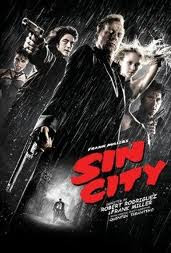New equilbrium: Buster Rayburn is in a prison cell. His voiceover can be heard. "Here I am again. They said I wouldn't make it on the outside. If only I didn't meet that dame."
Disruptive event: Buster is drunk in a bar on his own and is greeted by a gangster who says that he has a job for him. Buster turns down the job.
Recognition of disruption: The gangster's girlfriend Lacey Lane appears. Buster can't take his eyes off her.
Buster is back at the same bar drinking bourbon. Lacey Lane walks in and whispers seductively in his ear.
Lacey gives Buster a gun and a kiss.
Buster and Lacey meet in his dingy hotel room. She thanks him and says that she will run away with him that night.
Buster back in jail. His voiceover. "If only I walked away when I had the chance."
Attempting to repair the damage: "Buster shoots the gangster as he leaves his house one morning.
Buster waits for Lacey at the railway station. The cops turn up and arrest him. Lacey can be seen in the background. She has obviously reported him to the police.
Buster quickly grabs the policeman's gun and after a struggle, manages to fire a shot which hits Lacey and she dies.
Equilibrium: Back to Buster in jail. His voiceover can be heard. "You see, dames always bring a man down. She won't hurt anymore suckers now."
Flashback to Buster walking out of jail.
Our film noir fits the general conventions of a film noir as the main characters include an anti-hero, a femme fatale and a villian. Usually in film noirs the femme fatale dies, and in this one, Lacey Lane does die. Typically in film noirs, the femme fatale ends up to be the character who manipulates the anti-hero, and this happens in ours, too. In general, I think our film noirs is quite traditional and fits the general conventions of other film noirs.




























